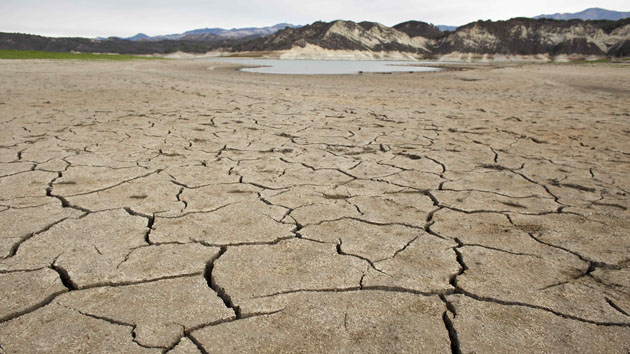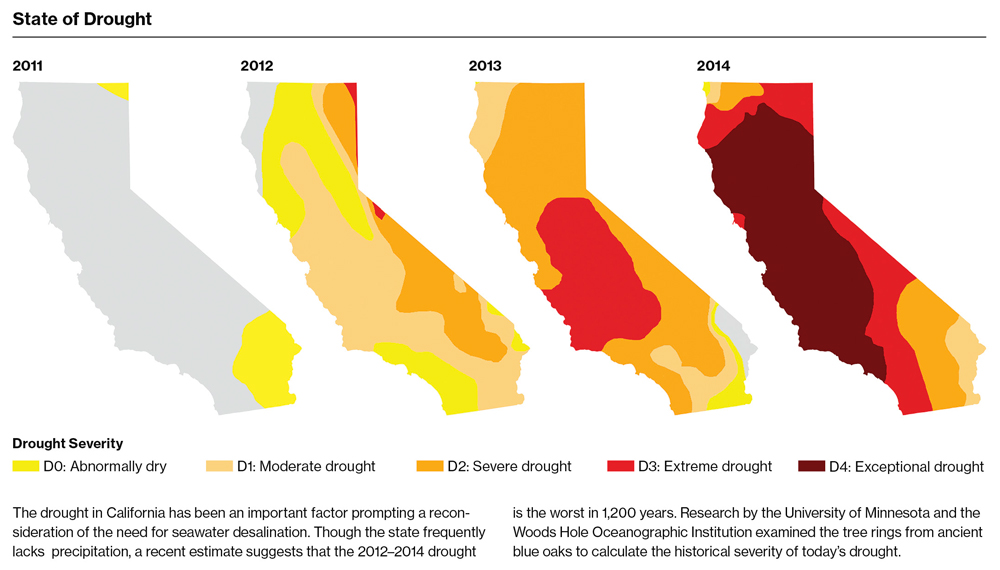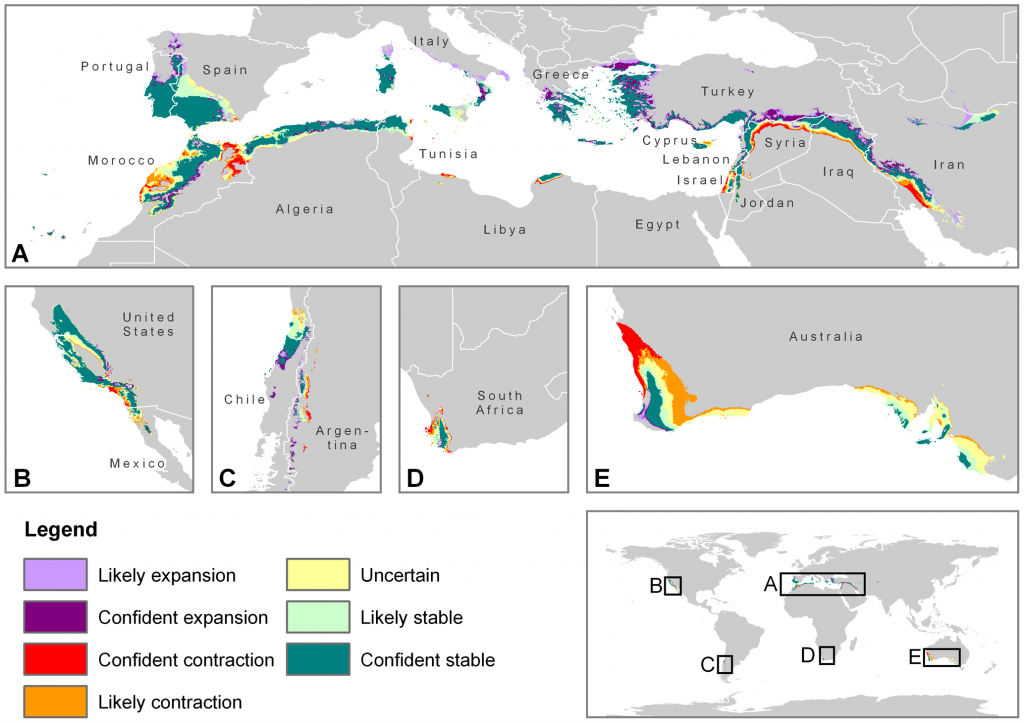December 16, 2014 – Desalination of Pacific Ocean water may prove to be a cheaper solution for California then massive relocation of its cities as Mediterranean climates are impacted by global atmospheric warming.
California is out of freshwater (see maps below). The last five years of progressive drought is rendering the Central Valley, the heartland of American agriculture, into a desert. The San Joaquin and Sacramento Rivers are drying up as is the aquifer beneath them. The Colorado River basin no longer meets the freshwater demands of both landowners and city dwellers in the U.S. Southwest.
So what to do? Apply technology to the problem and a billion dollars and you get the largest desalination plant under construction in North America which when opened will produce 204 million liters (54 million gallons) of fresh drinking water daily using reverse osmosis, a reliable but old and energy intensive commercial desalination technology.
Sounds like a lot of water but it’s not. Apparently it amounts to 10% of San Diego County’s freshwater needs at a cost 80% higher than treated water coming from elsewhere. But the plant represents a hedge against worsening times forecast by climate scientists.
San Diego and much of Southern California experiences a Mediterranean climate. This type of climate can be found on five continents as seen on the maps below.
Mediterranean climates are considered highly desirable agricultural zones. They are characterized by extended summer droughts and cool wet winters. What is climate change doing to them? In some instances the climate models predict new Mediterranean climate zones appearing. But for the vast majority of existing zones the forecasts for the end of the 21st century suggest contraction and loss of species diversity. California will be less impacted than others with Australia suffering the most, a contraction between 23 and 51%.
With 80% of California experiencing extreme drought desalination is a preferred solution over massive depopulation of the state. But the $1 billion USD cost is just the down payment. The annual energy bill to desalinate the water going through this one facility is $30 million. That’s equivalent to lighting and heating 30,000 homes. Part of the reason is the technology being used. Reverse osmosis requires a ton of energy as well as disproportionately large amounts of seawater to make the end product, in fact, almost twice the amount of freshwater output. And there are negative consequences to sea life near desalination plants. The highly concentrated salty residue has to go somewhere and that’s usually back into the ocean.
I recently wrote about shock electrodialysis, a water purification method that can remove salt and in combination with a porous glass membrane produces fresh, drinkable water. Shock electrodialysis requires much less energy and much less water to produce that liter of freshwater from saltwater.
Another promising desalination technology uses thin-film one-atom thick graphene membranes to convert salt to freshwater. Such membranes would require far less energy. The challenge here is to ramp up production of graphene. That too is being addressed but we are still years away from the appropriate production scale.
For other Mediterranean climates the options California faces are almost the same but in some cases there is no nearby body of saltwater upon which to draw. So for now while California recycles and conserves what little freshwater it has, and builds costly and expensive desalination facilities, other Mediterranean climate zones may be less fortunate. What all continue to hope for is rain.






















[…] Billion Dollar Desalination Plants – Is this the Answer to California’s Prolonged Drought? https://www.21stcentech.com/billion-dollar-desalination-plant…d-drought/ […]